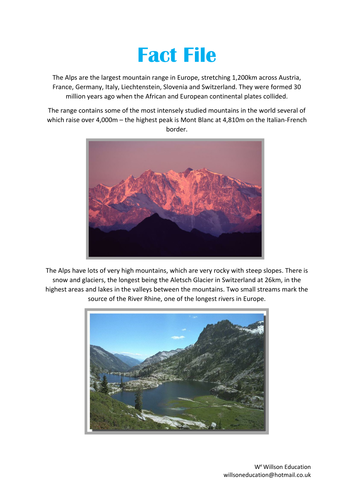







This unit of work begins with how mountains are defined, where they are located and how they are formed. We look at the weather in mountainous areas and its effects on shaping mountains. We explore the human and physical influences on landslides, avalanches, and glaciers. An investigation delves into how we use mountainous areas, specifically The Alps and Atlas Mountains. This leads to exploring Everest Base Camp and the Chagga people who live on Mount Kilimanjaro.
The social, economic, and environmental impacts of visitors is discussed with a look at how negative impacts could be diminished within the Lake District. The foreign influence on the Sherpas way of life is studied. We see how plants and animals’ can adapt to life in the Andes which leads to the future of our mountains in terms of climate change and global warming.
The students build on the fieldwork techniques of interpretating photographs and field sketches with Sugarloaf Mountain and Table Mountain. This concludes with asking: “are there monsters in our mountains?” looking at evidence for and against the existence of The Yeti…
A range of individual and group activities are incorporated within this booklet including annotating maps, completing flow diagrams, gathering research independently and from provided print, hands on experiments, case studies, and a peer assessment task.
Please like and follow us on Facebook @WillsonEducation or Pinterest @willsoned for more exciting resources, activities, and upcoming events to incorporate into your lessons.
Something went wrong, please try again later.
This resource hasn't been reviewed yet
To ensure quality for our reviews, only customers who have purchased this resource can review it
Report this resourceto let us know if it violates our terms and conditions.
Our customer service team will review your report and will be in touch.
